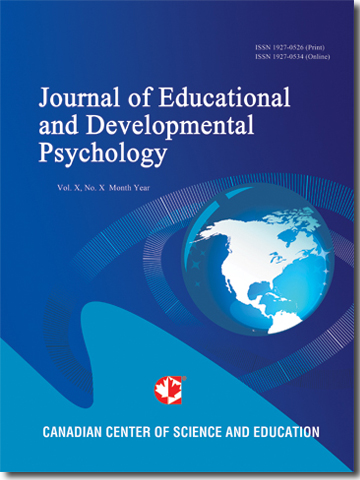How Flexible Is the Visuospatial Reference System in Children Aged 4 to 12?
- Julie Heiz
- Koviljka Barisnikov
Abstract
The ability to correctly process spatial information largely depends on the capacity to either use a viewpoint according to a visual scene or a Frame Of Reference (FOR) and to flexibly shift between them. Literature indicates 2 types of FOR mainly used to represent the location of an object. The egocentric FOR uses the location of an object relative to oneself and develops earlier than the allocentric FOR, which uses the location of an object relative to other external objects. This study examined the spontaneous use of different FOR as well as their use following explicit task instructions. One hundred and thirty-five children (aged 4-12) were assessed with an adapted version of Taylor and Rapp’s (2004) spatial reference task. In the spontaneous instructions condition, most of the children aged 7 and above used an allocentric FOR. While in the allocentric instructions condition, children aged 4, 5 and 6 gave significantly more allocentric responses. In the egocentric instructions condition, all participants showed more egocentric responses, independently of their age group. The present study is the first to demonstrate that simple instructions enable children to use allocentric and egocentric FOR earlier, more effectively and more flexibly than do their spontaneous use. These findings also demonstrate that specific instructions could help children use a viewpoint in accordance to a situation. This could help improve academic performances and overcome the difficulties of some young children in developing the use of an allocentric FOR.
- Full Text:
 PDF
PDF
- DOI:10.5539/jedp.v5n2p51
Journal Metrics
(The data was calculated based on Google Scholar Citations)
1. Google-based Impact Factor (2021): 1.11
2. h-index (December 2021): 29
3. i10-index (December 2021): 87
4. h5-index (December 2021): N/A
5. h5-median (December 2021): N/A
Index
- Academic Journals Database
- CNKI Scholar
- Copyright Clearance Center
- CrossRef
- Elektronische Zeitschriftenbibliothek (EZB)
- EuroPub Database
- Excellence in Research for Australia (ERA)
- Harvard Library
- Jisc Library Hub Discover
- JournalSeek
- JournalTOCs
- LIVIVO (ZB MED)
- LOCKSS
- MIAR
- Open Access Journals Search Engine(OAJSE)
- PKP Open Archives Harvester
- Publons
- ROAD
- Scilit
- SHERPA/RoMEO
- Standard Periodical Directory
- Stanford Libraries
- Technische Informationsbibliothek (TIB)
- UCR Library
- UoB Library
- WorldCat
- Zeitschriften Daten Bank (ZDB)
Contact
- Carol WongEditorial Assistant
- jedp@ccsenet.org
